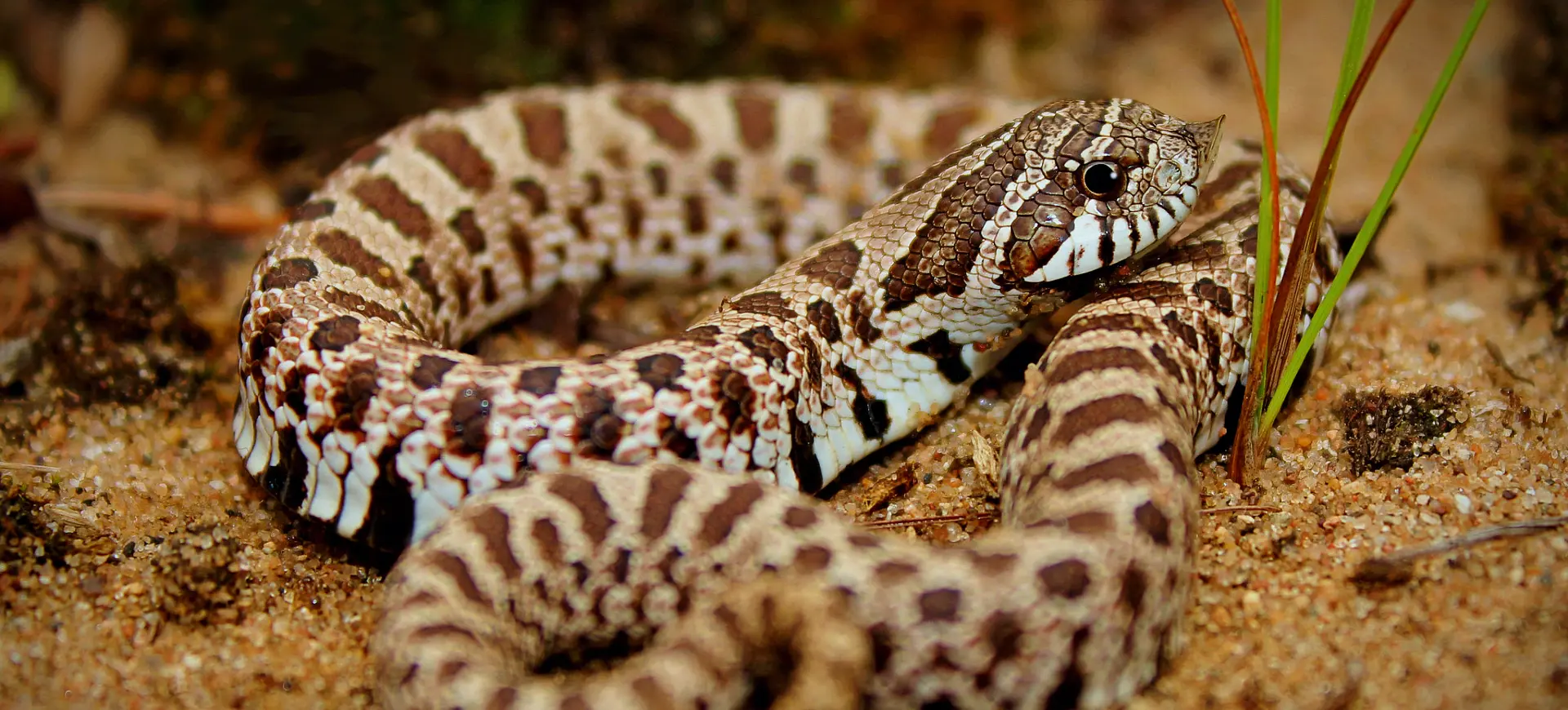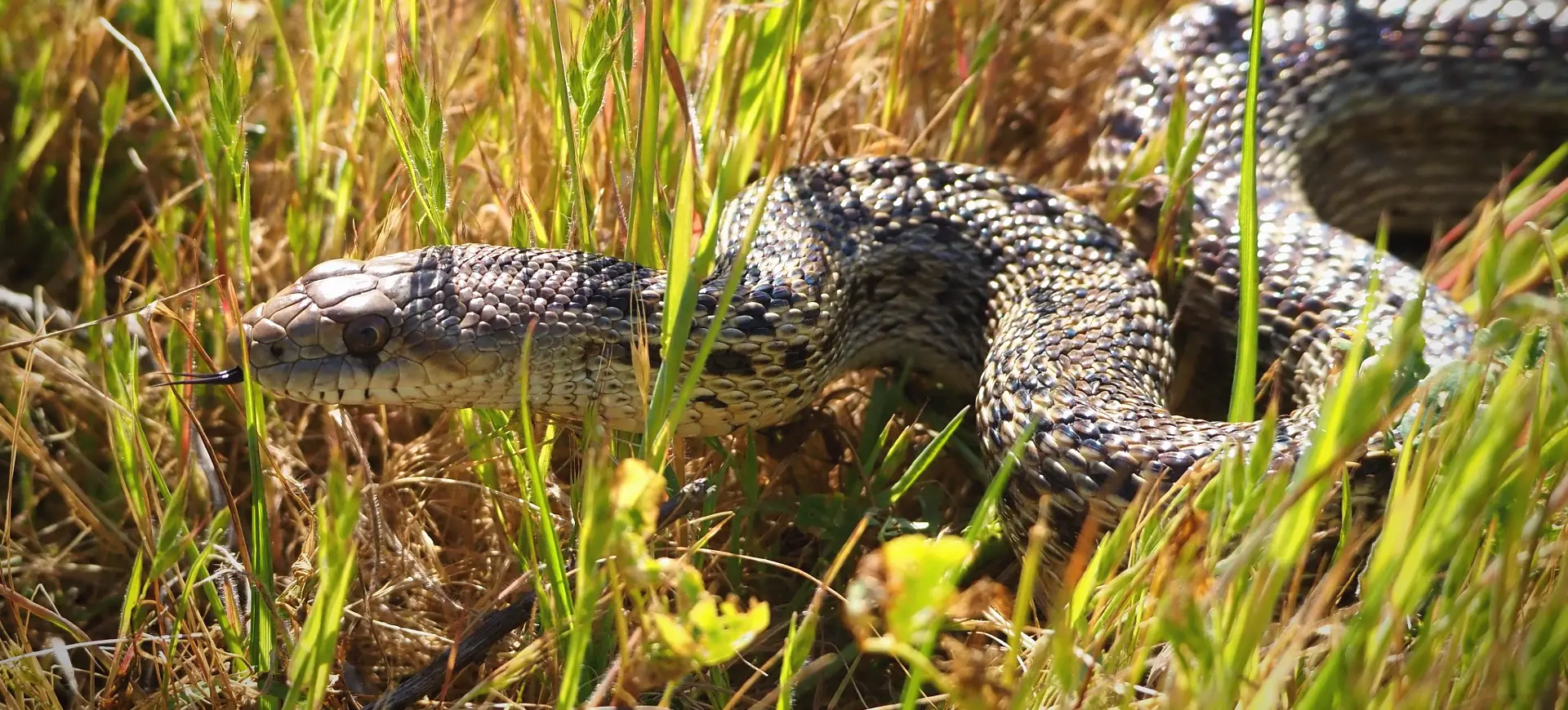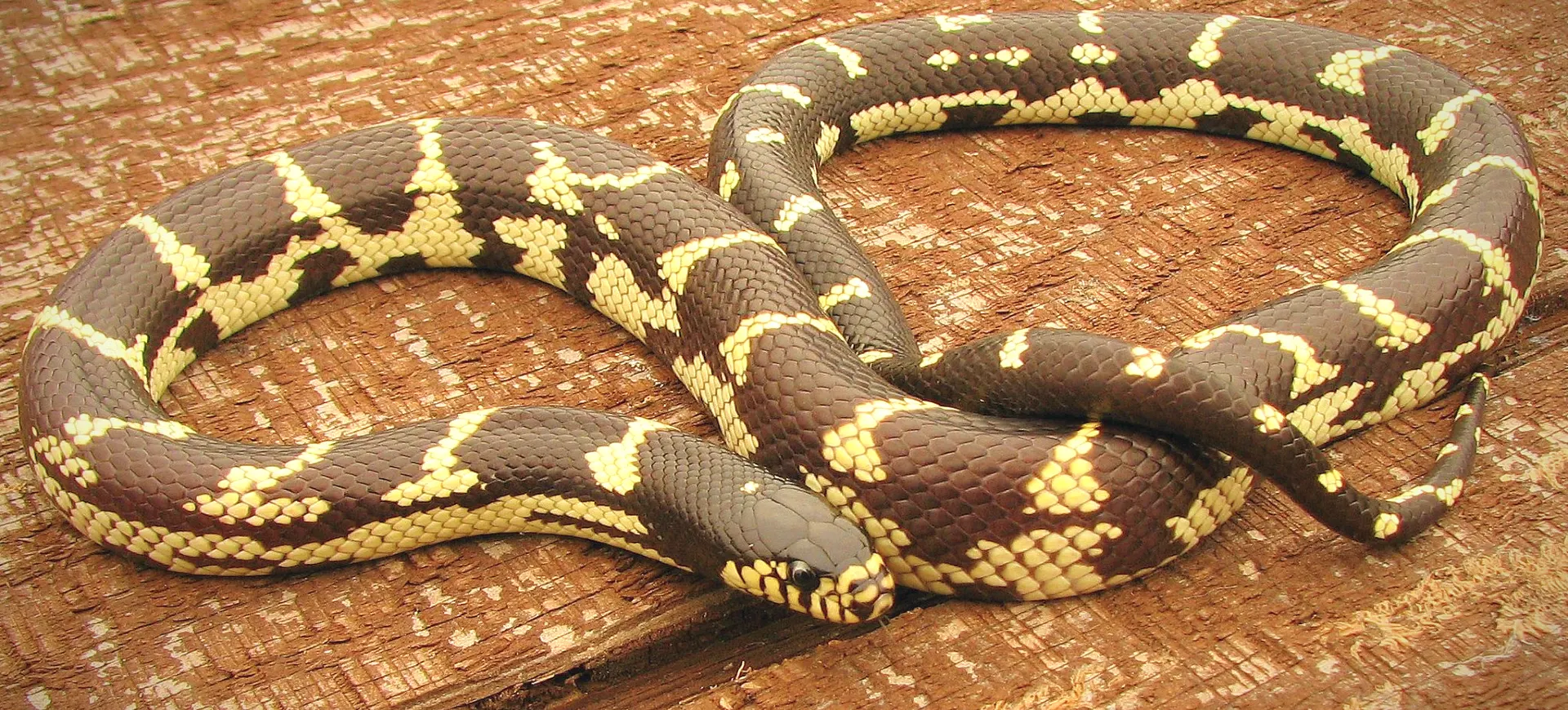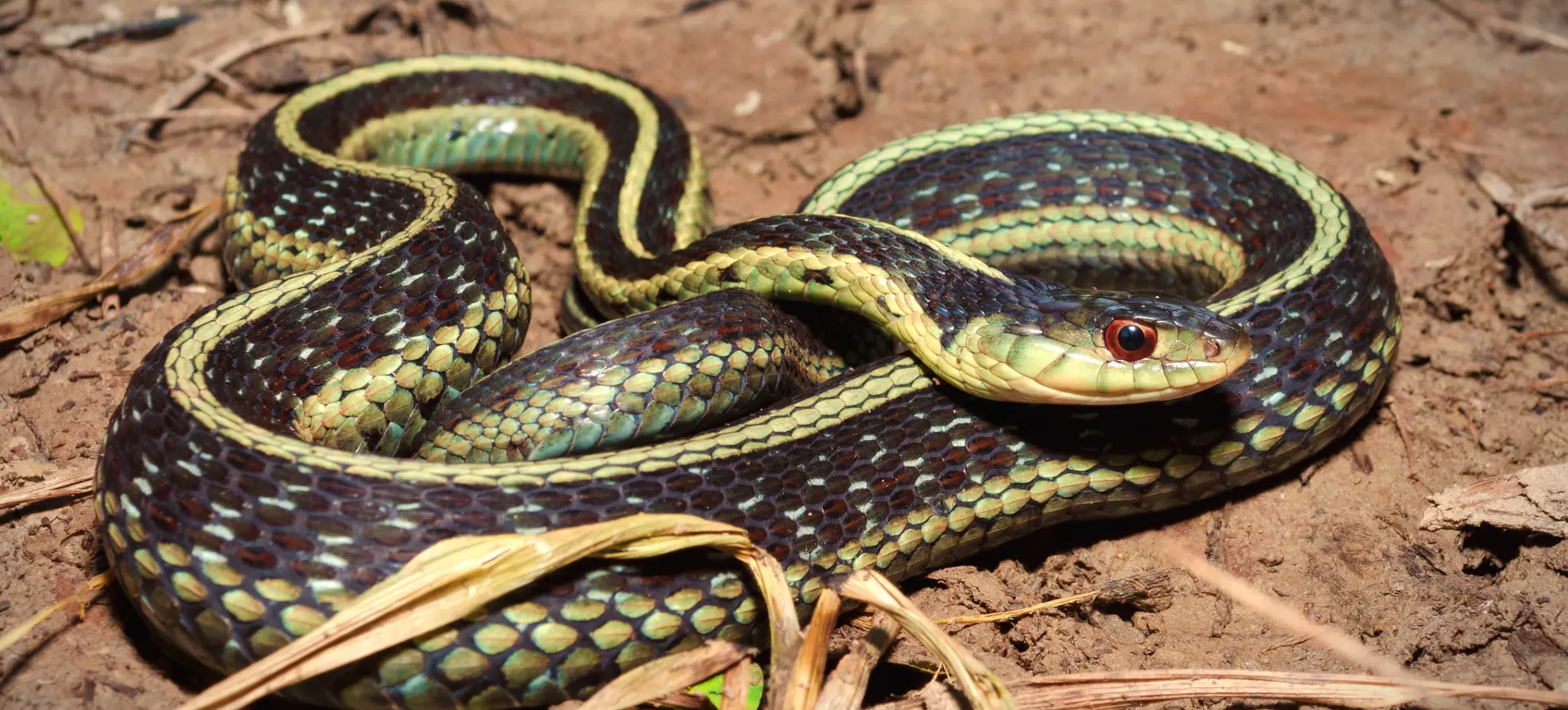Overview
The Cave Racer, known scientifically as Elaphe taeniura, is an Asian rat snake. These snakes are distinguished by their slender bodies, facilitating navigation through their complex, subterranean habitats. Typically, Cave Racers possess a coloration that blends seamlessly with the rocky, dim environments of caves, featuring shades of brown, gray, and sometimes slight greenish hues. They have adapted to life in darkness, with heightened senses that compensate for the low-light conditions they inhabit.
Cave Racers are predominantly found in Southeast Asia, thriving in limestone caves and rocky outcrops. These snakes are excellent climbers, using their agility to traverse the vertical challenges of their environment. Their diet primarily consists of bats, small birds, and insects, which they hunt using their keen sense of smell and heat-sensing pits. The species is noted for its active daytime hunting behavior, which is unusual for snakes living in shadowy realms.
The conservation status of Cave Racers is not fully determined, but they face threats from habitat destruction and the pet trade. Efforts to study these snakes are challenging due to their inaccessible habitats, making conservation work difficult. Despite these challenges, Cave Racers fascinates herpetologists and cave explorers with their unique adaptations to cave life.
Taxonomy
Kingdom
Phylum
Class
Order
Family
Genus
Species
Type
Current distribution:
Cave Racers are distributed across various Southeast Asian countries, with notable populations in Thailand and Malaysia, possibly extending into parts of Indonesia. These snakes are often found in limestone karst areas, providing their preferred intricate cave systems. Their exact population numbers in the wild are difficult to ascertain due to their elusive nature and the challenging terrain of their habitats.
Conservation efforts and research are ongoing to better understand the distribution and status of Cave Racers in the wild. Despite their wide range, habitat destruction and human encroachment pose significant threats to their populations. The efforts to map their distribution are crucial for developing conservation strategies to protect these unique snakes and their habitats.
Physical Description:
Cave Racers are characterized by their long, slender bodies that can reach lengths of up to 2.5 meters (about 8 feet), although most specimens are smaller. Their scales have a smooth texture, aiding in their swift movement through the narrow confines of caves. The dorsal side of the snake is typically dark, with a lighter underside that helps it blend into the shadows and light contrasts of its natural habitat. This camouflage is essential for both hunting prey and evading predators within the cave systems.
Their eyes are relatively large, with round pupils, an adaptation to their low-light environments. These physical traits make them adept hunters and enable them to avoid threats in the complex cave ecosystems. Cave Racers do not exhibit significant sexual dimorphism, meaning males and females are similar in appearance. These snakes’ sleek and muscular physiques testify to their specialized lifestyle, which requires strength, agility, and precision to navigate their challenging habitats.

Lifespan: Wild: ~15 Years || Captivity: ~20 Years

Weight: Male & Female: 2.6-3.3 lbs (1.17-1.5 kg)

Length: Male & Female: 48-72 in (122-183 cm)

Top Speed: 10 mph (16 km/h)
Characteristic:
Native Habitat:
Cave Racers are native to Southeast Asia’s limestone caves and rocky landscapes, including parts of Thailand, Malaysia, and surrounding areas. Their habitat preference includes humid, shadowy environments where they can utilize their climbing skills and camouflage. These habitats provide ample hiding spots and hunting grounds, making them ideal for the Cave Racer’s lifestyle.
The microclimate within caves is relatively stable, offering the snakes a refuge from the external weather conditions. This stability allows for a consistent lifestyle and breeding cycle unaffected by the seasonal changes that impact many other species. The snakes have also been observed in forested areas near caves, suggesting a degree of habitat flexibility. However, their primary association remains with the cave systems that offer protection and abundant food sources.
Biomes:
Biogeographical Realms:
Continents:
Diet:
Diet & Feeding Habits:
Cave Racers are carnivorous, relying on a diet mainly consisting of bats, small birds, and insects. Their hunting strategy involves ambushing prey, using their stealth and speed to capture food. These snakes have developed a particular taste for bats, waiting at cave entrances or along flight paths to snatch their prey from the air. The diet of a Cave Racer is opportunistic, adjusting based on prey availability within their habitat.
In captivity, cave racers can supplement their diet with small rodents, demonstrating their adaptability in feeding habits. Cave Racers use both constriction and their sharp teeth to subdue prey, showing a versatile approach to feeding that ensures their survival in the wild. The snake’s metabolism is adapted to its environment, allowing it to go extended periods without food if necessary. This dietary flexibility is crucial for life in an ecosystem where food availability can be unpredictable.
Mating Behavior:
Mating Description:
Cave Racers are oviparous, laying eggs as their method of reproduction. The mating season typically occurs shortly after the end of the rainy season when conditions are optimal for egg development and survival. During this time, males may engage in combat for the right to mate with available females, demonstrating a competitive aspect of their reproductive behavior.
Females lay clutches of eggs in secure, hidden locations within the cave or surrounding forested areas. They incubate these eggs naturally at ambient temperature, with the mother snake playing no role in their care once laid. The incubation lasts several months, after which the eggs hatch into fully independent juveniles. These young snakes are born with all the necessary skills to survive, including hunting and camouflaging, indicating a high degree of precocial development.
Reproduction Season:
Birth Type:
Pregnancy Duration:
Female Name:
Male Name:
Baby Name:
Social Structure Description:
Cave Racers are solitary animals, coming together only during the mating season. Outside this period, they prefer to live and hunt alone, utilizing the vast cave systems and surrounding forests as their territory. This solitary nature is common among many snake species, allowing them to efficiently utilize their environment without social interactions.
Despite their solitary lifestyle, Cave Racers may occasionally be found near one another, especially in areas where food is abundant. However, these instances do not indicate social behavior but rather a convergence of individuals due to optimal hunting conditions. The snakes maintain territoriality, with individuals asserting dominance over certain areas, especially during the mating season.
Groups:
Conservation Status:
Population Trend:
The population dynamics of Cave Racers are not well-documented, partly due to their elusive nature and the inaccessibility of their natural habitats. Studies are limited, but researchers agree that these snakes could be facing declines in certain areas. Habitat destruction, primarily through deforestation and the development of cave areas for tourism, poses a significant threat to their populations.
Conservationists are concerned about the impact of the pet trade on Cave Racers. While not as highly sought after as some exotic species, their unique appearance and habitat make them a target for collectors. Efforts to monitor their populations are ongoing to establish protected areas and regulations to safeguard their natural habitats.
Population Threats:
Habitat destruction is the primary threat facing Cave Racers, as limestone karst regions are often mined for cement production or developed for tourism. This destroys their physical habitat and reduces the availability of prey, impacting their food supply. Additionally, the pet trade poses a risk to these snakes, with individuals being captured for sale in exotic pet markets.
Climate change could also impact cultures by altering the microclimate within caves, affecting the availability of their prey species. The combined effects of these threats require comprehensive conservation strategies to ensure the survival of Cave Racers in their natural habitats.
Conservation Efforts:
Conservation efforts for Cave Racers include habitat protection and establishing protected areas where their natural environments are preserved. These measures aim to safeguard the caves and surrounding forests that are crucial for the survival of these snakes. Education and outreach programs are also essential to raise awareness about the species and its threats.
Research into the biology and ecology of Cave Racers is critical for informing conservation strategies. Studies on their population dynamics, habitat requirements, and threats can help develop effective conservation plans. Collaboration between governments, conservation organizations, and local communities is key to successfully implementing these strategies.
Additional Resources:
Fun Facts
- Cave Racers can easily climb vertical rock faces and cave walls.
- Their diet includes bats, a prey item that requires precise timing and agility to capture.
- Despite living in caves, they are diurnal, being most active during the day.
- Cave Racers can reach lengths of up to 2.5 meters, making them one of the larger species within their habitat.
- They are not venomous but can deliver a painful bite if threatened.
- The coloration of Cave Racers provides excellent camouflage against the rocky backgrounds of their habitats.
- They have large eyes compared to other snakes, an adaptation to their low-light environments.
- Cave Racers are oviparous, laying eggs that hatch into fully independent juveniles.
- Their sense of smell is highly developed, detecting prey in complete darkness.
- Conservation efforts for Cave Racers focus on habitat protection and the regulation of the pet trade.














